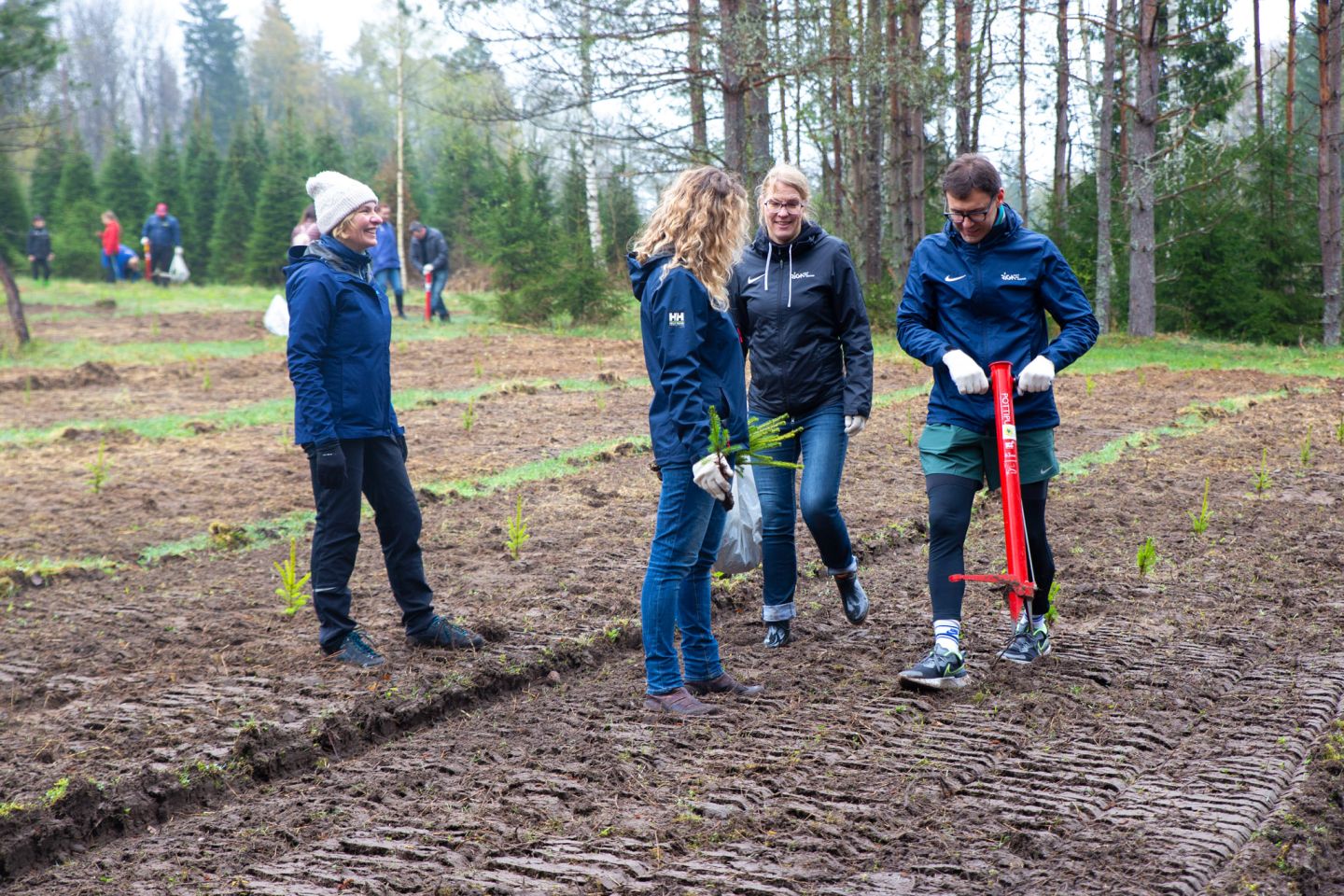The 2024 Rimi Riga Marathon has offset its carbon footprint fivefold
29 January 2025With the number of international participants increasing by more than 60%, the carbon footprint of the 2024 Rimi Riga Marathon has grown 1.5 times, reaching 342 CO₂e tons.
To offset this, as part of the marathon’s sustainability program “Run for Future by Neste,” organizers and participants have together planted nearly 8,000 spruce trees in the Riga region and across Latvia—compensating for the marathon’s 2024 carbon footprint fivefold.
While the overall carbon footprint of the Baltic’s largest running event remains relatively small, the Rimi Riga Marathon stands out as one of the few events globally—and the only one in Northern and Eastern Europe—to fully offset its emissions by investing in carbon reduction projects.
How is the footprint being calculated?
We conducted the sustainability audit of the Rimi Riga Marathon in collaboration with Janis Brizga, a researcher and environmental expert from the University of Latvia, as part of the sustainability program Run for Future by Neste, which was developed with the support of our partner Neste.
CO₂e footprint includes the total amount of carbon and other greenhouse gas emissions directly or indirectly caused by the activities and products of a person, organization, or company. The footprint is measured in three scopes. At the Rimi Riga Marathon, Scope 3 accounts for the largest emissions, including the environmental impact of passenger transport. This covers both participants traveling to Riga for the marathon and their trips to the EXPO to collect race bibs, as well as to the start area at the Akmens Bridge.
What do the 2024 calculations reveal?
The 2024 marathon carbon footprint calculations once again reveal that the largest share—more than 80%—comes from participant transportation, including international participants traveling to Latvia and local travel to event venues in Riga.
Notably, per-participant passenger transport usage in the city decreased by 6% in 2024. According to Rimi Riga Marathon survey data, more participants opted for environmentally friendly transportation methods—such as cycling, walking, or public transport—to reach the marathon start and EXPO.
It is important to note that the emissions per participant decreased in 2024, reaching 10.4 kg CO₂e per participant. In response to the organizers’ call to financially offset their individual carbon footprints in 2024, 513 participants took part, nearly 4,000 participants exchanged their race bibs for spruce trees at the finish line, and 937 participants signed the sustainability manifesto at the EXPO.

2025 sustainability initiatives
In 2025, organizers will focus on a range of sustainability aspects in event organization and participant communication.
Firstly, the 35th anniversary of Rimi Riga Marathon will feature a pilot project for energy and water stations, serving water to participants in an unconventional way.
Secondly, educational activities launched in previous years will continue, from cleaning the Mežaparks running trails during the plogging training, to exchanging used materials for spruce trees and providing advice on how to properly plant these spruce trees.
Thirdly, organizers will continue educating the running community on issues concerning the largest contributor to the carbon footprint—transportation and traveling to the Rimi Riga Marathon event locations.





